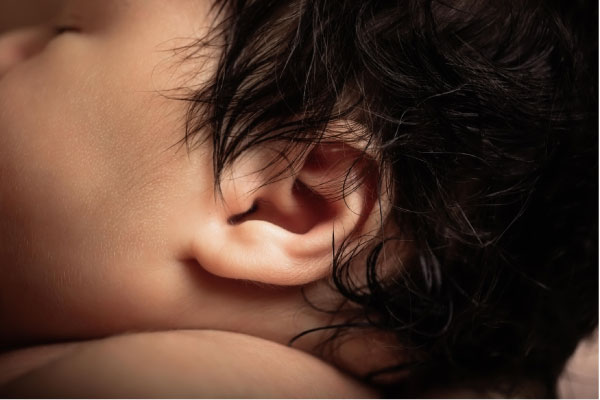Mastoiditis Treatment in Children Atlanta, GA
Mastoiditis is an inflammation or infection of the mastoid bone. The mastoid bone, located behind the ear, is made of cells that drain the middle ear. Mastoiditis may be mild or very serious.
What causes mastoiditis in children?
Mastoiditis happens when an infection in the middle ear spreads into the mastoid bone.
Symptoms of mastoiditis in children
Children may experience to following symptoms of mastoiditis: pain, redness, or swelling behind the ear, in the ear, have a fever, irritability, headache, hearing loss, and the ear lobe may protrude due to swelling of the mastoid bone.
How is mastoiditis diagnosed?
Your pediatrician will examine your child’s ears, nose, and throat using an otoscope. The pediatrician will refer you to see a Pediatric ENT Specialist. The provider may order an X-ray and CT scan of the mastoid area, and fluid may be collected for evaluation.
Treatment of mastoiditis
A pediatric ear, nose, and throat provider (otolaryngologist) treats mastoiditis in children. Treatment often includes draining the middle ear and the use of antibiotics. Your child may need ear tubes and a brief hospital stay.
It is imperative that patients complete all follow-up appointments. Follow-up appointments are essential to evaluate any hearing loss and other complications of mastoiditis.
Complications of mastoiditis
Complications of mastoiditis may include:
- Hearing loss.
- Infection of other tissues.
- Nerve damage.
- Problems with the inner ear.
- Infection or inflammation of the covering of the brain and spinal cord (meningitis).
Schedule Your Child’s ENT Consultation Today
Pediatric ENT in Atlanta provides comprehensive care for mastoiditis and other ear conditions in children. We serve families throughout the Atlanta metro area, with convenient locations in Alpharetta, Duluth, and Marietta. Get expert pediatric ENT care for your child – reach out to us today.


